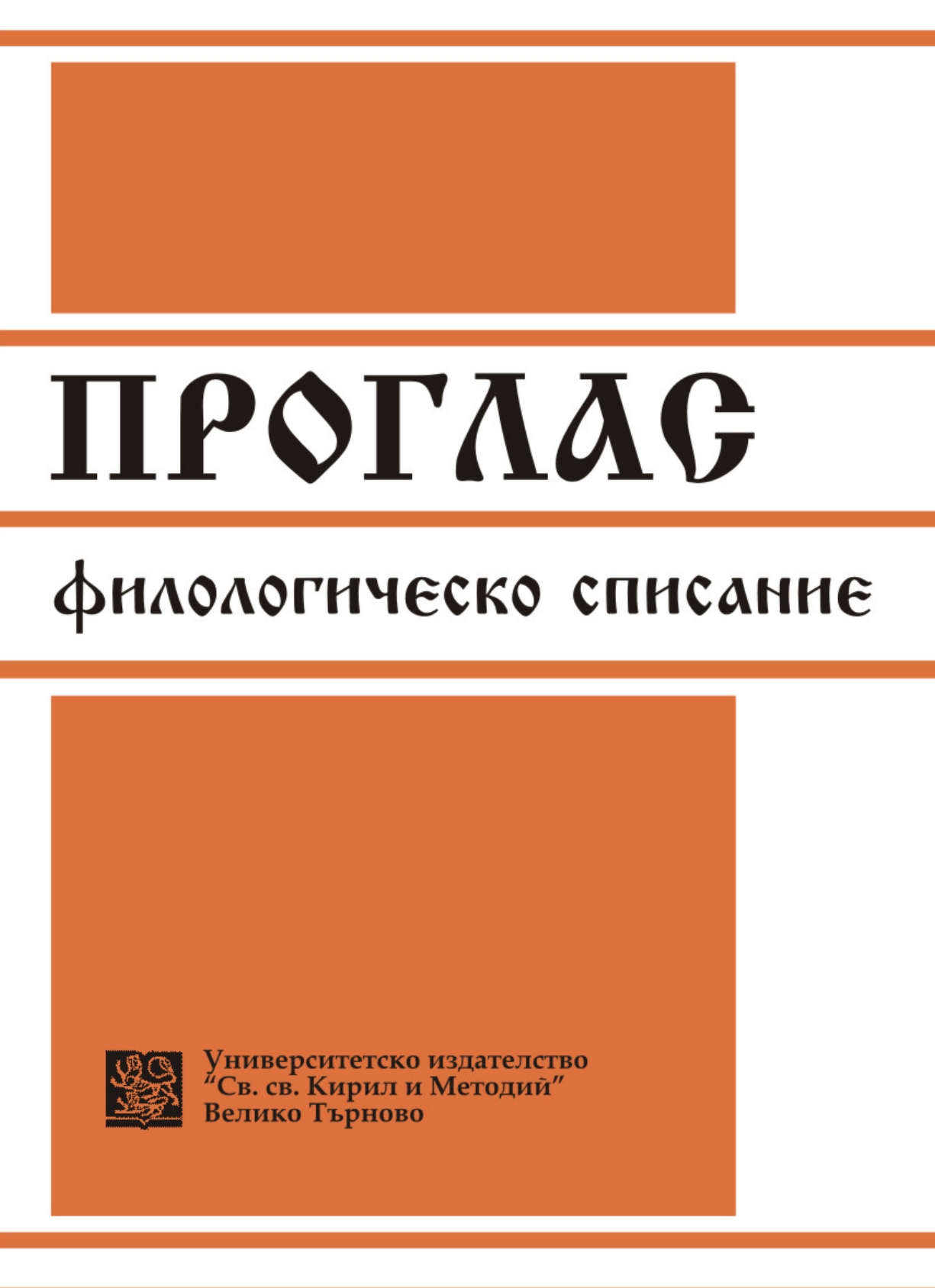
We kindly inform you that, as long as the subject affiliation of our 300.000+ articles is in progress, you might get unsufficient or no results on your third level or second level search. In this case, please broaden your search criteria.

In the article, the Baltic etymology *glaima- ~ *gleima- is suggested for the Estonian verb laimama ’to spread a lie or a shameful fabrication about someone, defame, slander’. Other etymological descendants current in modern Baltic languages include, e.g., Lith. gléimoti ’to smear, soil, besmirch, befoul, pollute; to stick’, gleima ’slime; saliva’, Latv. dial. gliema ’slimy dirt, slime; earthworm’ etc. It is pointed out that Est. obsol. laim : laima ’slander’ is a verbal noun, whence the noun laim : laimu id has been derived by means of the suffix -u. As revealed by etymological semantic analysis, the verb laimama refers to an activity resulting in the defamed person being poured over with an unpleasant sticky liquid or slime. Other expressions with a similar motivation can be found in Estonian as well as in the neighbouring languages.
More...
Review of: Janīna Kursīte. Zīmju valoda: latviešu žesti. Rīga: LU Akadēmiskais apgāds, 2016. 304 lk.
More...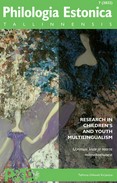
Whereas many children in bilingual settings do not speak the minority language, very little is known about receptive bilingualism from the onset of speech and about such bilinguals activating their dormant language. Drawing on longitudinal ethnographic data, this paper reports on a case study of a receptive simultaneously bilingual Lithuanian-German boy who later started speaking both of his languages. Parents can do much for their children’s bilingualism, but the child’s agency is very important as well. The latter is much determined by the macro-socialisation factors, primarily by the communicative motivation of the child to use the minority language outside the bilingual home. Next to confirming possible insufficiency of the OPOL model, the paper demonstrates how quickly passive languages can be activated and highlights the importance of continuity of input and the value of receptive bilingualism.
More...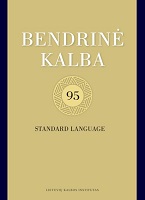
This article discusses a study of written dialecticism, conducted in order to assess how the authorial grapholect conveys oral dialecticism and to analyse the spelling choices made by the author. The dialectal discourse used for this study consists of a number of Facebook posts published in a dialectal grapholect by a female informant. The first part of the article focuses on specific orthographic decisions made by the author-informant to convey the distinct features of her native Eastern Aukštaitian subdialect of Panevėžys. The second investigative section of the article examines the perception of a dialectal grapholect, looking closely at how ordinary language users read and understand texts written in it. The study shows that the dialectal grapholect used by the author-informant – a speaker of the Eastern Aukštaitian subdialect of Panevėžys – is relatively systematic. Her transcription is predominantly phonetic, with the morphological principle employed in cases of positional quantitative vowel changes, i.e., no variations in individual word forms were captured in the written materials. The author-informant utilises the grapheme inventory of the standard language, without inventing any new graphemes or borrowing them from the orthographic sets of other languages in order to reflect certain specific sounds of the Panevėžys subdialect. Stress retraction is one of the most common causes for ending reduction in the linguistic homeland of the author-informant. However, when neither the accent nor the consonant palatalization after dropping the vowel are marked in the written text, anyone reading it, especially speakers of other Lithuanian variants, may struggle to clearly identify the grammatical form recorded by the author-informant. This was also confirmed by the perceptual study conducted at the same time. The sociolinguistic portraits of its participants indicate that dialectal codes were more alien than familiar to them in terms of active usage, but that they have had opportunities to gain some perceptual experience in spoken dialectal codes. However, despite a relatively good holistic understanding of the authorial dialectal grapholect, the participants of this study were not able to translate it accurately into Standard Lithuanian. Variations in translating the transcribed dialect into the standard language indicate communicational limitations of written dialecticism. It is important to stress that this is not a critical evaluation of the authorial dialectal grapholect, as communicational limitation can have certain advantages, too. By distinguishing, a dialectal grapholect also designates. While it may be misunderstood or partially understood outside of the variant’s community, a dialectal grapholect functions (or can function) as a fully-fledged, even self-regulating, code within that community. However, this aspect of written dialecticism requires more in-depth research. The discussed case study provides certain insights into the role of an ordinary community member in preserving the vitality of their dialectal code. By making certain orthographic decisions, the author-informant “solidifies” the dialecticism of her native variant, with all its distinguishing and common features. But this does not necessarily confirm the vitality of the dialectal code in apparent time, despite the co-existence of certain dialectal and non-dialectal features in the same discourse fragment (spelling the way one pronounces but that pronunciation can vary). Either way, it is clear that local “conservation” (i.e., within the community or at least amongst some of its members) of dialectal features, differently to dialect dictionaries, can have an impact on the spread of those features. However, this subject would undoubtedly benefit from further large-scale studies.
More...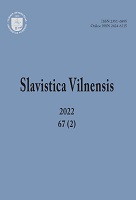
The announcement presents the conception of the didactic project Multilingualism of the Baltic region, which has been carried out since the second half of 2022 in the Institute of Specialised and Intercultural Communication at the University of Warsaw thanks to funding granted by the university’s Teaching Excellence Fund. Special attention is given to the first part of the project focused on the language situation in Lithuania. This part of the project has been already completed. In October 2022, professors from Vilnius University, Lithuania taught a specialist course held in Russian language consisting of seven seminars and practical training. These types of projects respond to demand expressed by students interested in exploring languages and cultures of the Baltic region. They also pursue the goals of a contemporary university aiming for innovation in teaching.
More...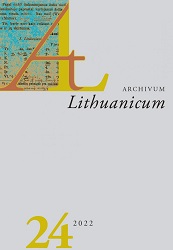
The article deals with the philological polemics that took place in the Kingdom of Prussia in the 1710s as the first discourse recorded in writing that addressed matters of using the Lithuanian language in social life, covering, among other things, aspects of the policy on language and language planning. Since the process concerning the public language had the involvement of governmental officials who acted in the name of the Prussian Church and the King, and had the authority to adopt different decisions, the Lithuanian language became an object of policy on language in a specific sense. The first language policy makers who in the 18th century recognised and advocated the problems of the quality of the public Lithuanian language and took to making decisions to have the public involved in the resolution of the language matters were as follows: (1) Friedrich Deutsch (1657–1709), comptroller of Prussian churches and schools, chief preacher of the palace, and theology professor at Königsberg University; (2) Johann Berent (1658–1712), councillor of the court of the palace of Königsberg and former law professor at Königsberg University; (3) George Friedrich von Kreitzen (1639–1710), chancellor of the Kingdom of Prussia as a member of the government. Mörlin was the first to identify the issues with using the Lithuanian language in social life, and suggested making an impact on the written and spoken language, especially the language that was used by higher-ranking individuals. By publicising his principles, initiating a demonstration of how they could be applied in practice, and engaging the educated part of the public in the discussion, he sought to give some social and cultural power to his principles. Mörlin’s Principium Primarium in Lingva Lithvanica was the first tract on Lithuanian linguistics to promote a number of ideas regarding the more functional use of the Lithuanian language in social life. Based on the spoken language of the people and on folklore, it proposed that the spoken and written language used by priests should be regulated so that it catered to the needs of the majority of the public. With their activities aimed at having an impact on the language of the upper social classes, the participants in the discourse who supported Mörlin and his ideas sought to close the gap between the different language variations and to make communication easier. Mörlin considered having an impact on the spoken and written Lithuanian language that the upper social classes used to be one of the ways to resolve social and cultural problems, which could facilitate the spread of Christianity and the education of the lower classes. As the need to regulate the Lithuanian language also had the support of Prussian ecclesiastical and governmental bodies that envisioned ways to continue and manage processes that were already under way, the discourse of the policy on language in the early 18th century should be considered as the first to demonstrate the aim of both individuals and the state to influence the language and its user groups in a bid for better communication as a stepping stone towards the consolidation of the Prussian Church’s positions and the advancement of society as such.
More...
The article looks into five books on religious didactics published by the Calvinists in Eisleben in 1863–1865: Atsiminimas da geroje adijnoje, Nusidawimas biedna Joniuka, Prisiwertimas grieszna żmogaus ing Diewą, Wartojmas arba meginimas patis sawę and Gromata Naszłaitela ing sawa mieła Iszganitoja, which bibliographers and historians claim to have been written by Alexander Raphael Moczulski. A textological analysis has revealed Prisiwertimas not to have been drafted by Moczulski. This is evidenced in the differences in the spelling and the language of the texts covered by the analysis, the mismatched hypernormalisms, and the specific characteristics of the edits made to Biblical quotes and hymns. Certain qualities of the language in Prisiwertimas demonstrate that, unlike Moczulski, the editor of this text was under the influence of both the subdialect of Biržai and the subdialects of the northern Panevėžys region further to the west. Furthermore, Prisiwertimas features a much larger number of unique morphological forms not recorded elsewhere, which indirectly reflect the typical truncation of the ending of the Panevėžys subdialect and the resultant uncertainty on the editor’s part with regard to how certain parts of the text were to be written. The spelling and the language of the rest of the tracts covered by the analysis have a lot in common: without a shadow of doubt, they were drafted by the same person, as likely as not Moczulski. The hypercorrections that are present in the books edited by Moczulski suggest that, just like many Calvinists of the period, he was inclined to support the norms of the traditional Kėdainiai variant, even though by then the hub of Reformer activity had relocated to Biržai. Most efforts were focused on dropping the nasal reflexes of the East Aukštaitians. It is probable that all five publications covered by the analysis are not original tracts, but rather translations from German or Polish, even though no specific sources have yet been discovered (some references could be evident in the illustrations to the texts, particularly those that have a caption in Polish or German). The ample Biblical quotations in the books have been found to have been adopted from Bt¹ (or Bt²) and from the Lithuania Minor translation of the OT of the Bible that had been in circulation since 1735 (at least some of the tracts in question relied on the original 1735 edition). The research has allowed for the sources of the hymns featured in the books to be updated. The hymns were not original: one of them was a new translation of Friedrich von Lehr’s Spruch von der Bibel, others were adaptations of earlier Lithuanian tracts, such as the 1845 Calvinist hymnal, and several Lithuania Minor publications (in particular the official Lutheran hymnal). One hymn featured in Prisiwertimas has a very unique source: a rhymed text of a prayer from a translation of Rojaus Darželis (The Garden of Eden), a pietistic prayer book by Johann Arndt (its 1845 edition, in all likelihood), which had been supplied by Lithuania Minor worshippers at home. The rather intense use of Lithuania Minor Lutheran hymns in tracts by Lithuanian Reformers was yet another sign of vigorous collaboration between the two Protestant branches. The need for this collaboration was admitted by the Calvinist synod of 1862. It was critical for the continued existence of the Lithuanian Reformer Church.
More...
Simonas Daukantas prepared two manuscripts of his Lithuanian translation of the Fables of Phaedrus: one in the first half of 1836 (PaP), and another ten years later in about the first half of 1846 (PaPhr). Daukantas exploited two different orthographic tactics in tapping the first manuscript (PaP) as the source for the second one (PaPhr): (1) either to substitute older orthographic peculiarities for his own more recently introduced spelling equivalents (more frequent approach), or (2) just to keep them (more seldom). (1) Habitually, Daukantas modified the features of the earlier PaP manuscript: (a) <i, î> [ẹ] → <ĩ> (Ƶînau ‘I know’ → Źĩnau); (b) [i·, i] in stems <i> → <y> (būti ‘to be’ present 3‑person form [ira ‘it is’ → yra], suffixes yba, ‑ybė [prekibà ‘to the trade’ → prekybaj, narsibieje ‘in valor’ → narsybie], inf. suffix <i> → <y> [mokite ‘to teach’ → môkytĩ]); (c) in stems and endings <ai, ei> (<a>, <iey>) → <aj, ej> (Ƶamaite ‘Lowlanders’ → Ƶámajtej; weislę ‘a breed’ → wejslę); (d) [ẹi] in open endings <ij> → <ĩj> (kurij ‘which ones’ → kùrĩj); (e) [ẹi] in roots <ei> → <ie> (deina ‘a day’→ dieną) and <ei> → <ĩj> (lijpę ‘[he] ordered’ → lĩjpę); (f) instr. pl. m. endings <‑ays, ‑eys>, <‑às, ‑ès> → <‑ajs, ‑ejs> (łondeys ragays ‘[with] the pointed horns’ → łąndejs ragajs; aukuràs ‘[with] the altars’ → aukùrajs); (g) <on, om, an> (<un>) [ọn, an, ọm, am] → <ąn, ąm> (spindontiomys ‘[with] the glittering [something]’→ spindąntiomis; gełombiemys ‘[with] the baize’ → gełąmbiemis); (h) inf. ending <‑te> → <‑tĩ> (důte ‘to give’ → důtĩ); (i) būti ‘to be’ past 3‑person form bů ‘was’ → buwo; (j) dat. sg. m. and adv. Lowlanders’ endings <‑ů> [ọu] → Highlanders’ endings <‑uj> [‑ui] (skaititoiů ‘to a reader’ → skajtitojuj, pasků ‘later; afterwards’ → paskuj). (2) More occasionally he was influenced by the equivalent in the prototype PaP and kept it: (a) [i·, i] in stems <i> = <i> (in forms deriving from inf. suffix [pawiks ‘(I) will succeed’ = pawiks]), in the root gyv (negiwije ‘dead ones’ ≈ negiwĩje), in other roots (ligino ‘[he] leveled’ = ligino; tiłù ‘silently’ = tiłù); (b) grapheme <ù> [ọ] (miniesinù ‘[with] the mentioning’ = miniesinù). Daukantas abundantly exploited one feature in both old and new orthographic versions: graphemes <ů> / <ou> (ůdegą ‘a tail’ = ůdegą; pardůs ‘will sell’ → pardous). He essentially returned to his older grapheme <ů> (168×), although equally important remained the digraph <ou> (205×). In the initial (pp. 3–9) and final (pp. 52–63) segments of the PaPhr manuscript, Daukantas chose only the digraph <ou>, but within the inner (pp. 3–11, 26–51) segments his tactic was different: he blended <ů> with <ou>. Another tendency: frequent pronominal acc. sg. forms ką, tą and instr. sg. kuo, tuo (including variations) were mostly rendered as kou, tou, most probably due to the old knack of his hand. In certain cases, Daukantas modified not only orthography, but dialect forms as well, i.e. he chose different diatopic variants. Instead of the former Lowland forms, he switched to these Highland equivalents: (a) digraph <ie> [ie] in the roots dien ‘day’, Diev ‘God’, vien ‘one’, viet ‘place’; (b) dat. sg. m. and adv. endings <‑uj> [ui]; (c) past 3-person form buwo ‘was, were’. The printer of the book (PaPhs) was Eduard Pratz in St Petersburg. His typesetters worked better than the typesetters at the printing press of Christian Hintze that Daukantas used for his earlier publications. In Hintze’s editions there were many mistakes in both letters and their diacritical marks. In PaPhs, however, there were fewer cases of grapheme confusion. It is highly probable that at least one of the PaPhs typesetters knew Lithuanian (especially the setter of the fourth and fifth signatures on pp. 37–48, 49–60), and that at least one was ignorant of it (the setter of the third signature, especially pp. 29–36). It is thinkable that Daukantas could have familiarised himself with the typeset text before some of the proofs were corrected (the word Leaukys ‘wolf’, typical only of Daukantas, was introduced in print even though the manuscript lacks it). The majority of the corrections, however, were probably established by the typesetters, especially by the one who knew Lithuanian and introduced some forms atypical of Daukantas himself (such as tautosyllabic digraph <ĩn> [ẹn]—teatsitink ‘let it happen’ → teatsĩtĩnk). The financial supporter of the publication, Ksaveras Kanapackis, might have been a speaker of the Eastern Highland dialect; thus, he was not in a position to insert such Lowland dialect features as iness. sg. f. (pastogie ‘in the shelter’) and diacritical letters <ĩ> [ẹ] and <ù> [ọ].
More...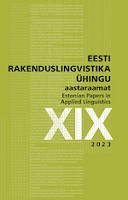
For beginners of Estonian as a second language, developing listening skills often causes difficulties and stress. In order to learn listening skills, it is necessary to listen to a lot of interesting and relevant texts, which is lacking for A-level learners of Estonian. The listening tasks prepared for the listening texts enhance the development of listening skills. The article examines a development study during which a listening skill development collection was created for adult A1 level learners, the aim of which was to reduce the listening anxiety of beginner Estonian learners and increase the joy of listening. In the first stage of the development study, the initial version of the collection was created, with an eye toward the modernity, vitality, interest and affordability of the material. In the second stage, the created material was tested with two A1-level study groups (n = 14). During the experiment, feedback was collected both from the learners and from the research diary of one of the teachers. Based on the received feedback, the material was supplemented. The finished collection contains 12 topics, which contain 79 texts, 82 tasks and 322 images for educational purposes. The collection was also analyzed with a language analyzer, and the results showed that the collection corresponds to the A1 level. For the learners who tested the material, listening was very interesting, caused little stress and brought a lot of joy.
More...
The article looks at the ways the spelling of foreign words of French origin has become fixed in Estonian, with a focus on the adaptation into Estonian of words pronounced with an open e in French. In Estonian, the spelling of foreign words typically follows their pronunciation, i.e., the spelling is based on the approximate pronunciation in the (original) language. Hence, the variations in the spelling of the Estonian adaptations likely derive from the French pronunciation instructions provided in Estonian sources and possibly from the influence of intermediary languages. Two spellings of the word for the French choux pastry cake eclair currently co¬exist in Estonian: ekleer and ekläär. The word first appeared in ÕS 1960 as ekläär and was also standardized as ekleer in 2013; as such, it is a good example of the adaptation of French words in Estonian. The adaptation of French borrowings containing an open e has been inconsis¬tent in Estonian. The initial fixation of the word éclair with the spelling ekläär likely derived from the erstwhile custom of pronouncing the open e in the stressed syllables of French words as a long ä in Estonian. An effort was probably also made to avoid the spelling coinciding with the Russian form (эклер); there is a general tendency to ignore Russian-influenced forms when it comes to the standardization of foreign words in Estonian. The variation of the open e in Estonian adaptations has been affected by pronunciation – differences in the phonotactics of French and Estonian – as well as inter¬mediary languages: German, Swedish and Russian.
More...
The dictionary of Estonian dialects (EMS) lists oht as three lexical items: oht1 (= South Estonian oht) ‘1 peril, danger, menace; jeopardy, risk, hazard; 2 distress’; oht2 ‘(herbal) medicine, drug, antidote’; and the partitive-only ohtu ‘-like, -ish, resembling, as good as’. Mägiste (1929) has connected oht1 to Votic and Ingrian ohto ‘enough’ and further with Estonian oher (in literary language ohter) ‘abundant, plentiful; liberal, bountiful; rich; opulent; profuse’, explaining the meaning ‘distress’ as derived from ‘abundance of distress’. I equate the Estonian, Votic and Ingrian words with the Finnish and Karelian ehto ‘condition; alternative, choice, possibility; sufficient, abundant’, derived from the Proto-Finnic verb *ehti-, meaning ‘have time, arrive in time, forestall; get ready, finish; turn green, ripen; decorate; wear’ in different Finnic dialects. Estonian ohtu has developed from ‘alternative of’, perhaps under the influence of Middle Low Saxon achte ‘like, in -ish way’; the derivative oher has arisen from the ‘abundant’ semantics. The Finnic equation is made possible by positing the change *e– > *o– before a second syllable o in Votic, Estonian and South Estonian. The same change has occurred in Estonian onu ‘uncle’, cf. Finnish eno ‘maternal uncle’, and in two words with initial h-: Estonian hobu ‘horse’, cf. Finnish hepo id., and Estonian orm ‘string or loop of a birch-bark shoe’, cf. Finnish hermo ‘nerve’. In addition, I propose a borrowing from Old Norse ótti < Proto-Scandinavian *ohtō ‘fear’. Mingled with the inherited *ohto (< *ehto) ‘choice, possibility’, the loanword has acquired the meaning ‘possibility of sth. fearful, i.e. danger, menace, risk’, making in turn the inherited *ohto – meaning ‘choice or help against evil’ – still visible in Old Literary Estonian oht, and further ‘(herbal) medicine, drug, antidote’. Another possibility is to explain oht2 through the verb ohutama1 ‘heal, attack evil forces with witchcraft’ derived from the borrowed *ohto ‘fear’ (the homonymous ohutama2 ‘pester’ is derived from oht1).
More...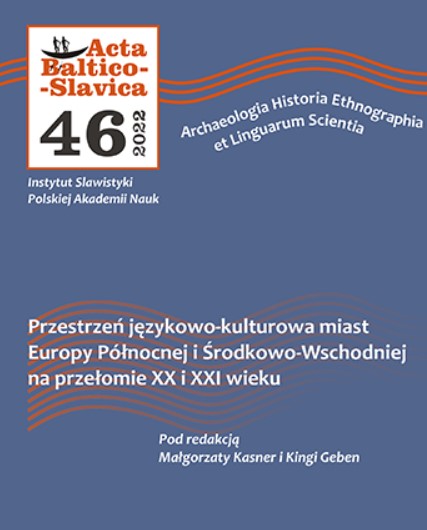
The aim of this co-authored article is to provide an overview of contemporary Lithuanian dialect dictionaries in terms of their macro- and microstructure as compared to the concepts of description applied in selected recently published Polish regional dictionaries. The study considers the following issues in a comparative perspective: 1. The range of entries (integral or differential, with selection made by lexicographers according to the adopted criteria). 2. The arrangement of entries (alphabetical, alphabetical-cluster, thematic). 3. The form of headwords (single- or multi-word). 4. The way of defining the meaning (descriptive, synonymic, referential). 5. The choice of textual illustrations and their notation. 6. The use of grammatical information and the level of its complexity. 7. The use of lexical maps and other visuals complementing the content of the definitions of headwords.
More...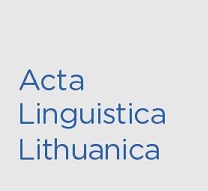
The article addresses new gender-denoting coinages present in the Database of Lithuanian Neologisms from the formational point of view. It furthermore offers a brief overview of the feminist linguistic activism and the feminist language reform (also known as the gender-based language reform, non-sexist language reform, etc.), as well as the Gender-sensitive Guidelines of Vilnius University, advancing a hypothesis that this could have played a role in the appearance of new gender-denoting coinages in the Lithuanian language. The article identifies the most productive methods and tools of the formation of such coinages; describes the quantity of new names based on gender attribution that are made with the traditional and novel (or unconventional as far as this category of formation is concerned) tools of formation, as well as the nature of the new words (that can be stylistically charged or neutral); and concludes with the statistics on the dissemination of gender-denoting new Lithuanian coinages on the Internet.
More...
The article addresses dialectal speech (dialecticism) in the northern part of the Southern Samogitian of Raseiniai in the 2nd half of the 20th century and the 2nd decade of the 21st century. Dialectal changes are revealed by analysing the dialectal data of two periods (the fragments of manuscript texts of the 2nd half of the 20th century and the audio recordings of the 2nd decade of the 21st century) from seven points of Lithuanian Language Atlas, which were considered the best representatives of the subdialect of Raseiniai in the 20th century: Kurtuvėnai (LLA 195), Kušleikiai (LLA 225), Padubysys (LLA 226), Kražiai (LLA 257), Kelmė (LLA 258), Adomaičiai (LLA 292), and Pakražantis (LLA 293). The usage of dialectal features has undergone certain changes over more than six decades. However, in the 2nd decade of the 21st century the representatives of the subdialect of Raseiniai of the older and oldest generation use the local varieties of the subdialect of Raseiniai (dialectal speech), which developed on the basis of the features of the traditional subdialect. The differences between minimum and maximum dialectal indicators and the variations in dominant indicators prove that the area of Kelmė already exhibited dialectal heterogeneity in the 2nd half of the 20th century. However, more pronounced variations in dialectal values demonstrated in audio recordings compared to textual fragments imply a careful conclusion about a more rapid change of the subdialect in the 21st century as a result of the processes of convergence.
More...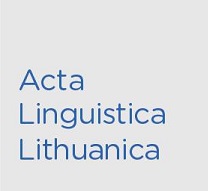
This will help to solve the eZero b'il sas rental problem: vns. in. One and the same person can be pronounced twice - b'ilsw and b'ilsu. in 2002 checked (cf. Savukynas 1966: 175-176; Baléikonis 1967: 130). This kind of steering depends on the speaker's desire to emphasize vns. jnagininka (heard- You even say prig'ére. b'i.ls1, although he said vns. noun. bilsas).
More...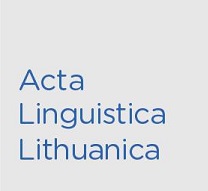
Review of: Rita Miliūnaitė: įvairuojantys ir nauji lietuvių kalbos reiškiniai xxi a. Pradžioje: sistematika ir pokyčių kryptys, Vilnius: Lietuvių kalbos institutas, 2022, 721 p. DOI doi.org/10.35321/e-pub.42.lietuviu-kalbos-pokyciai ISBN 978-609-411-322-2
More...
Review of: Daiva Murmulaitytė. Naujažodžių darybos ir morfemikos tyrimų perspektyvos (Lietuvių kalbos naujažodžių duomenyno atvejis), Vilnius: Lietuvių kalbos institutas, 2021, 184 p. DOI doi.org/10.35321/e-pub.16.naujadaros-tyrimu-perspektyvos ISBN 978-609-411-289-8
More...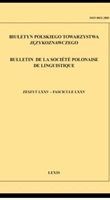
The aim of the paper is to review Witold Mańczak’s ten arguments supporting the hypothesis on the existence of a Finno-Ugric substratum in Baltic languages, as well as to discuss Jan Henrik Holst’s critical remarks on the matter. The present author discusses all the problematic issues and presents his own position.
More...